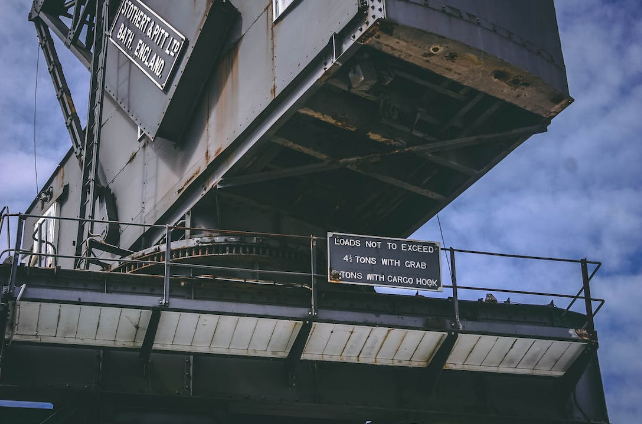Platform systems play a crucial role in creating safe working environments on industrial and commercial rooftops, as well as within indoor structures. These rooftop support systems provide a stable and secure surface for various tasks, including equipment and rooftop maintenance, inspections, and general access.
In many cases, rooftop platform systems are dedicated to solar panels or greenhouses. However, in commercial settings, these systems are also helpful for navigating the variety of equipment that the rooftops may contain. Rooftop platforms are critical for OSHA compliance. Furthermore, platform systems often include additional elements as well, such as:
- Integrated cable trays,
- Pipe supports,
- Duct supports,
- Walkways, pathways, stairs, ramps, and more.
In this article, we will explore the design and benefits of platform systems, emphasizing the use of different materials, and provide insights into a sample platform system design.
What Are Platform Systems?
Platform systems are engineered structures that serve as a stable surface for workers and equipment, ensuring safety and efficiency during various industrial and commercial operations. These systems are designed to withstand heavy loads, harsh environmental conditions, and provide a secure footing for personnel.
Commercial and industrial rooftop platform systems are usually made of steel and aluminum, but may also be made out of different alloys. There are several distinct designs as well, such as a basket design, floor plans, and more.
Benefits of Platform Systems
Platform systems offer a range of benefits, making them a valuable addition to industrial and commercial settings:
- Safety: The primary function of platform systems is to enhance safety. By providing a secure surface, they reduce the risk of accidents, slips, and falls, particularly in elevated or challenging work environments.
- Accessibility: Platform systems allow easy access to hard-to-reach areas, such as rooftops, tall structures, or confined spaces, enabling maintenance and inspection activities.
- Load-Bearing Capacity: These systems are designed to support heavy equipment, machinery, and personnel, ensuring that critical operations can be conducted without concerns about structural integrity.
- Customization: Platform systems can be tailored to specific needs, accommodating various sizes, shapes, and load requirements, making them suitable for diverse applications.
- Durability: Constructed from robust materials, platform systems are built to withstand the harshest weather conditions, corrosion, and wear and tear.
- Cost-Efficiency: By providing a safe and accessible workspace, platform systems improve work efficiency, potentially reducing labor costs and preventing costly accidents or equipment damage.
Materials Used in Platform Systems
Platform systems can be crafted from a variety of materials, each offering unique advantages and characteristics. Here's a breakdown of common materials used in platform systems:
- Steel: Steel platforms are known for their exceptional load-bearing capacity and durability. They are ideal for heavy-duty applications and provide long-lasting performance.
- Aluminum: Aluminum platforms are lightweight, making them suitable for applications where weight is a concern. They offer excellent corrosion resistance, making them a preferred choice for outdoor installations.
- Fiberglass: Fiberglass platforms are corrosion-resistant, electrically non-conductive, and ideal for applications where exposure to chemicals or electrical equipment is a concern. They are also lightweight and easy to transport. These platforms are usually designed for residential settings or warehouses, where portability or lightweight design may be a consideration.
- Galvanized Steel: Galvanized steel platforms have a protective zinc coating that provides corrosion resistance. They are often used in outdoor and industrial settings.
- Composite Materials: These platforms combine various materials, such as fiberglass and reinforced plastics, to offer a balance of strength, corrosion resistance, and lightweight properties.
A Sample Design: What a Platform System Should Include
A well-designed platform system should encompass various elements to ensure safety, durability, and functionality. Below is an overview of what a sample platform system design should include:
- Platform Material: Depending on the application and environment, choose the appropriate material for the platform. Ensure it offers the necessary load-bearing capacity and resistance to environmental factors.
- Guardrails and Handrails: Safety is paramount. Install guardrails and handrails to prevent falls and provide support for workers. These should meet safety regulations and standards.
- Access Points: Incorporate access points, such as staircases or ladders, to ensure safe entry and exit from the platform.
- Non-Slip Surface: The platform's surface should have a non-slip coating or design to prevent accidents due to slippery conditions.
- Weather Protection: In outdoor environments, provide protection from adverse weather conditions, such as rain, snow, or excessive sunlight, to ensure year-round functionality.
- Load-Bearing Capacity: Calculate and ensure that the platform can safely support the expected loads, including equipment, machinery, and personnel.
- Corrosion Resistance: Use materials and coatings that provide corrosion resistance, particularly for outdoor or industrial settings.
- Customization: Tailor the platform's size and shape to meet specific requirements. Consider additional features like access hatches, safety gates, or integrated tool storage.
- Compliance with Regulations: Ensure that the platform system design complies with relevant safety and construction regulations, such as OSHA standards.
Different Designs for Roof Platform Systems & Their Roles
As mentioned previously, roof platform systems come in various designs, each tailored to specific applications and roles. Understanding these designs is essential for selecting the most suitable platform for your requirements.
Here is an overview of the different roof platform systems out there:
- Walkway Platforms:
- Role: Walkway platforms are designed to provide safe access for personnel across rooftops. They create designated pathways, ensuring that workers can move safely without stepping on fragile or hazardous areas.
- Design Features: Walkway platforms feature anti-slip surfaces, guardrails, and handrails for fall protection. They are typically lightweight and easy to install.
- Crossover Platforms:
- Role: Crossover platforms are used to provide safe passage over pipes, conduits, and other rooftop obstacles. They prevent the need for workers to step over obstacles, reducing tripping hazards.
- Design Features: Crossover platforms are designed with raised walkway sections that bridge over rooftop obstructions. They often feature adjustable legs to accommodate varying obstacle heights.
- Service Platforms:
- Role: Service platforms are designed for technicians and maintenance personnel to access equipment and perform service tasks. They create a safe working surface on rooftops for routine maintenance.
- Design Features: Service platforms may include access ladders, handrails, and non-slip surfaces. They are sturdy and can support the weight of service personnel and equipment.
- Equipment Support Platforms:
- Role: Equipment support platforms are specifically designed to support heavy machinery, HVAC units, or other equipment placed on rooftops. They ensure stable and secure equipment placement.
- Design Features: These platforms are engineered to withstand the weight and load distribution of specific equipment. They often feature vibration isolation to protect sensitive machinery.
- Access Platforms:
- Role: Access platforms provide safe entry and exit points from rooftops. They are crucial for ensuring workers can access the roof safely.
- Design Features: Access platforms include stairs, ladders, and gates. They are designed for easy and secure rooftop entry, meeting safety standards.
- Guardrail Systems:
- Role: Guardrail systems are not platforms themselves but serve as protective barriers on rooftops. They help prevent falls and create a safe working environment.
- Design Features: Guardrails are designed for easy installation around the perimeter of rooftops, walkways, and service platforms. They are often modular for customization.
- Custom Platforms:
- Role: Custom platforms are designed to meet unique requirements and accommodate specific layouts, rooftop features, and equipment.
- Design Features: Custom platforms are engineered to address specific challenges and configurations. They offer flexibility in design to match the precise needs of the site.
- Composite Platforms:
- Role: Composite platforms are designed for applications that require a balance of strength and corrosion resistance.
- Design Features: These platforms are constructed using a combination of materials, such as fiberglass and reinforced plastics, to offer the benefits of multiple materials in one platform.
- Temporary Platforms:
- Role: Temporary platforms are designed for short-term access or maintenance tasks. They can be quickly installed and removed as needed.
- Design Features: These platforms are often lightweight and modular, making them easy to transport and assemble.
- Elevated Walkway Systems:
- Role: Elevated walkway systems provide secure access to elevated structures, such as cable trays, conduits, or rooftop installations, where standard walkways may not suffice.
- Design Features: They are elevated structures with anti-slip surfaces and guardrails to ensure the safety of personnel working at heights.
Conclusion
Platform systems are essential components of safe and efficient industrial and commercial operations. They provide accessibility, safety, and durability in various work environments. By choosing the right materials and incorporating key design elements, platform systems can be customized to meet specific requirements and enhance overall workplace safety and productivity.
Whether indoors or outdoors, these systems play a critical role in ensuring a secure and reliable work environment. To make sure that you are getting the right platform system for your commercial or industrial property, PHP Systems/Design is here to help. Call us today to learn more or request a pricing for your project!



